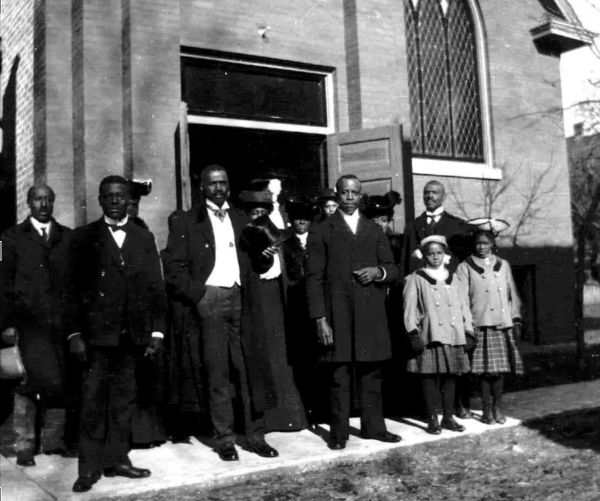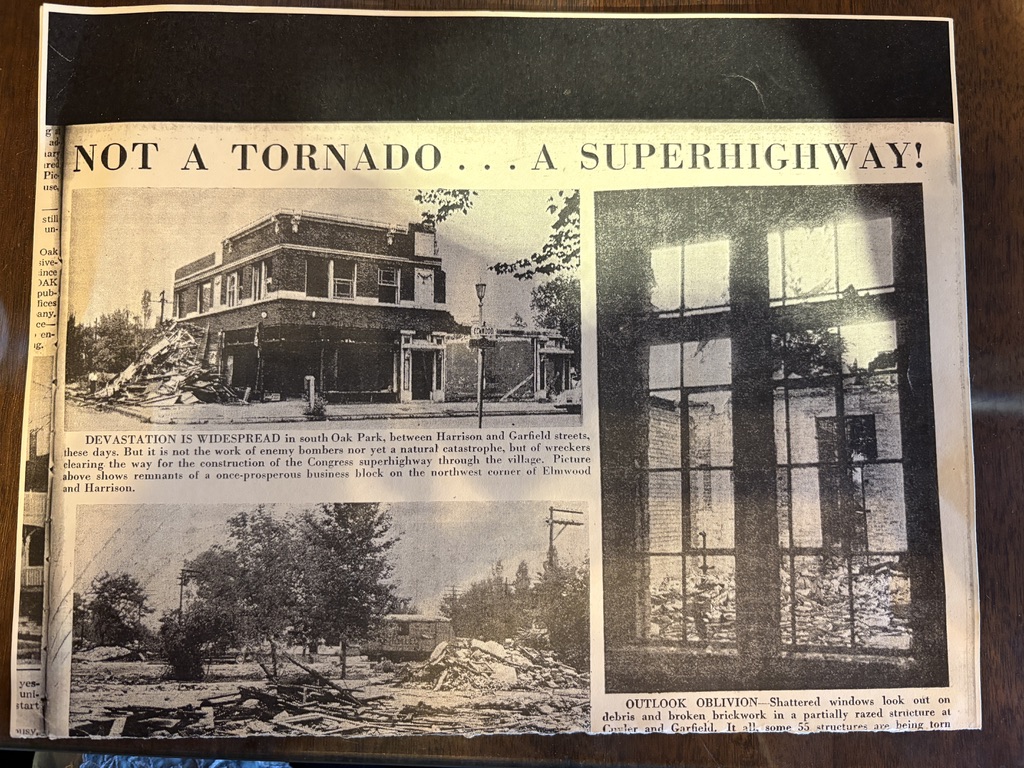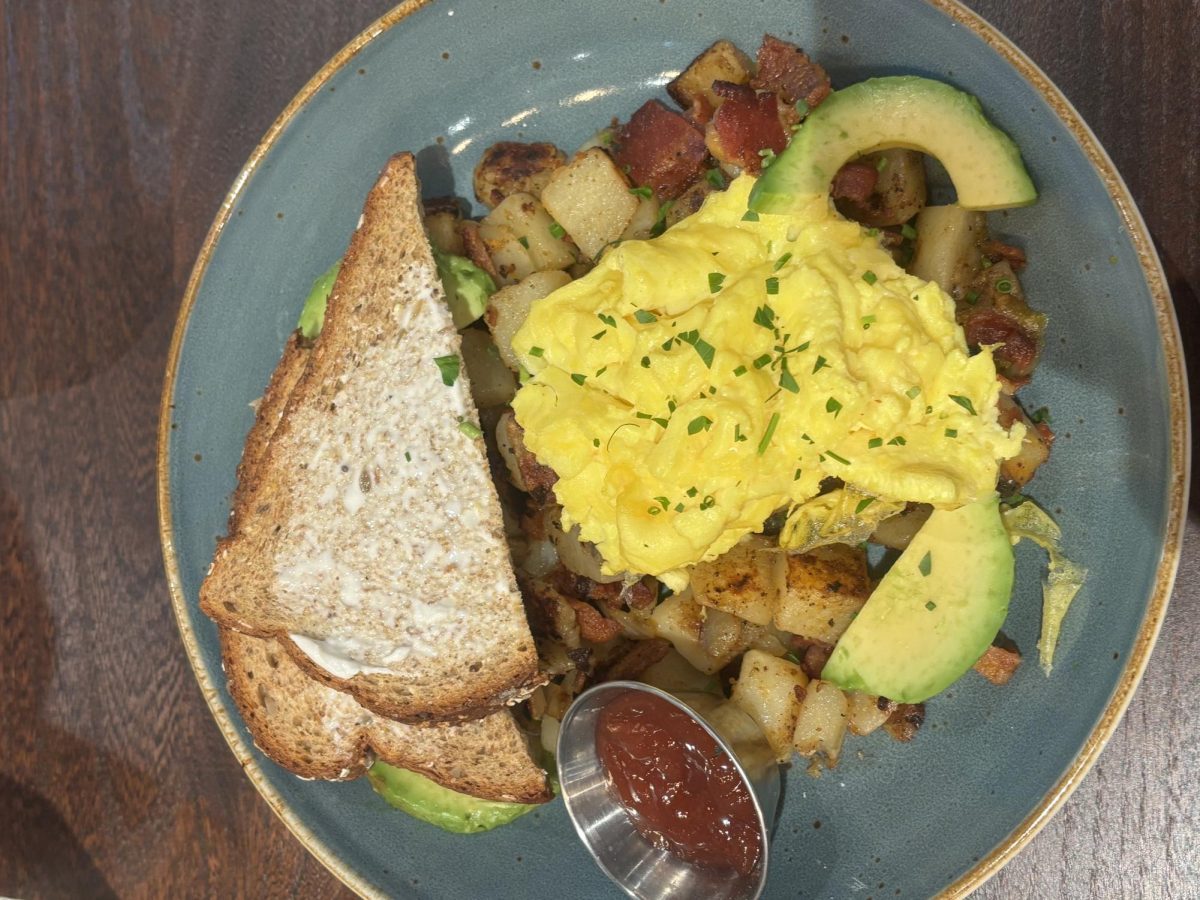Oak Park is known as one of the most progressive communities in the fifth most Democratic congressional district in America. That reputation is based on historical fact: In the late 1960s, Oak Park was at the forefront of the movement to end discrimination in housing.
Oak Park’s Fair Housing Ordinance was passed just a month after the passage of the Federal Fair Housing Act in 1968. The ordinance prohibited discrimination regarding the sale, rental and financing of a house based on race, religion, sex or national origin. The passage of Oak Park’s Fair Housing Ordinance was a milestone for the village, and it greatly contributed to its reputation as a progressive community.
But that reputation should not exempt us from taking a hard look at forms of oppression, such as systematic inequality, that we see in America–and our own village. If we as a community want to live up to our reputation, we must pay reparations to Oak Park’s Black residents and their descendants who were displaced from their homes and community institutions in the early 20th century due to racial bias.
While Oak Park is known for its progressive values, a closer look at its history may tell a more complicated story. In the early 1900s, our village, Oak Park, was home to a large and growing Black population.
The block of Lake Street between Marion Street and Harlem Avenue became the center of the Black community, according to the 2009 book “Suburban Promised Land: The Emerging Black Community in Oak Park, Illinois, 1880-1980,” by Stan West, Peggy Tuck Sinko and Frank Lipo.
This community consisted of Black-owned homes, businesses and a church. The family of Moses and Mary Shelton, for example, lived at 201 Lake Street on the northeast corner of Lake and Marion streets. James Willison, his wife Susan and their four children lived on the “first block of Lake Street east of Harlem.”
From 1900 to 1920, the Black community grew 164%, from 64 in 1900 to 169 in 1920. In 1902, Black Oak Park Baptists founded a congregation. As the Black population grew, “A growing [church] congregation began to seek a building of its own.”

The congregation was able to buy a plot of land in Oak Park located on Chicago Avenue just west of Cuyler Avenue. The congregation bought this parcel of land for $600 with help from both “white and colored” Oak Park residents.
Unfortunately, when the congregation went to build on their land, they were met with uproar from nearby white neighbors. Although all necessary paperwork and permits were issued, under pressure from white Oak Parkers, the village rescinded the permits.
Afterward, the Cuyler Avenue representatives offered the congregation $2,000 for the land, and the congregation elders accepted the buyout. This forced the congregation to relocate to a less desirable location on Williams Street, now called Westgate Street.
Oak Park activist and educator Nancy Alexander explains, “Blacks were constricted to this little sliver of a lot where we were basically red-lined in,” according to a November 2022 article in the Wednesday Journal by local journalist Michael Romain.
After the church’s failed attempt to build on Cuyler Avenue, prominent resident and land owner Elijah Hoard gave the lot on Williams Street to his maid, a member of the congregation, who then sold the plot to the congregation for $1,000. The plot was 30 feet by 100 feet and sat at what is today 1138 Westgate St.
With support from Black Baptist churches in Chicago and wealthy white Oak Parkers such as John Farson, the congregation was finally able to establish their place of worship on June 18, 1905. With the development of the Mt. Carmel Baptist Church, the Oak Park Black community established itself on the block in between Lake, Marion and Harlem streets.
As we know, that block of Lake, Marion, and Harlem is the biggest commercial district in Oak Park. The land is very valuable and profitable. But how did it go from a community of houses, apartments, small businesses and a church to what we see now?
During the same time of Black development in Oak Park, communities around Oak Park began to commercially expand on their portion of Lake Street. Lake Street Becoming an important center for commerce in neighboring communities led to more economic pressure to develop Lake Street in Oak Park, and eventually to conflict between the Black community and Oak Park businesses. To investors, Lake Street was a prime business opportunity. To Black residents of Oak Park, it was home.
Large department stores in the 1920s started popping up on and around Lake Street and the adjacent community. The first was the Fair Store. Soon after, the famous Chicago-based Marshall Fields store expanded to the northeast corner of Lake Street and Harlem Avenue. With these new businesses came economic pressure to expand onto Williams Street [Westgate]–the adjacent Black community where the Mt. Barmel Baptist church had stood for more than 15 years.
Coming in the next edition of Trapeze: the fate of Mt. Carmel Baptist Church and the adjacent community in the 1920s.







Louise • Oct 26, 2023 at 6:46 pm
If there needed to be a story told, then we should emphasize on this truth! This should be “front page news” for everyone to see! There has to be more information about this site and, racial description! Being push out by the “people “!